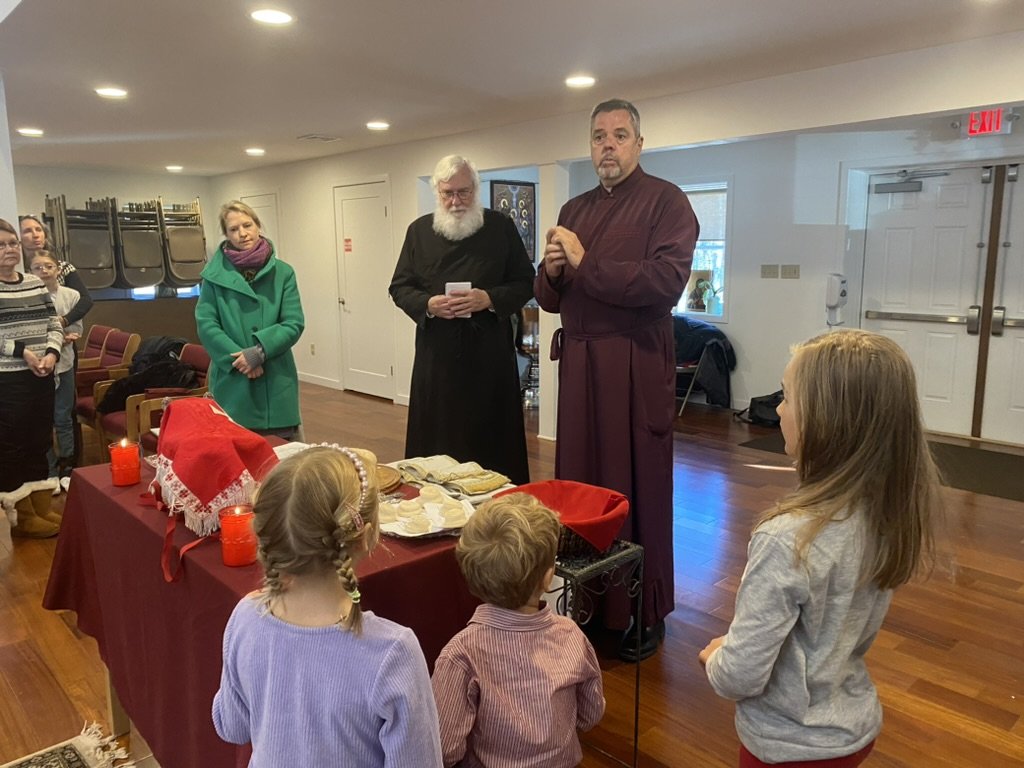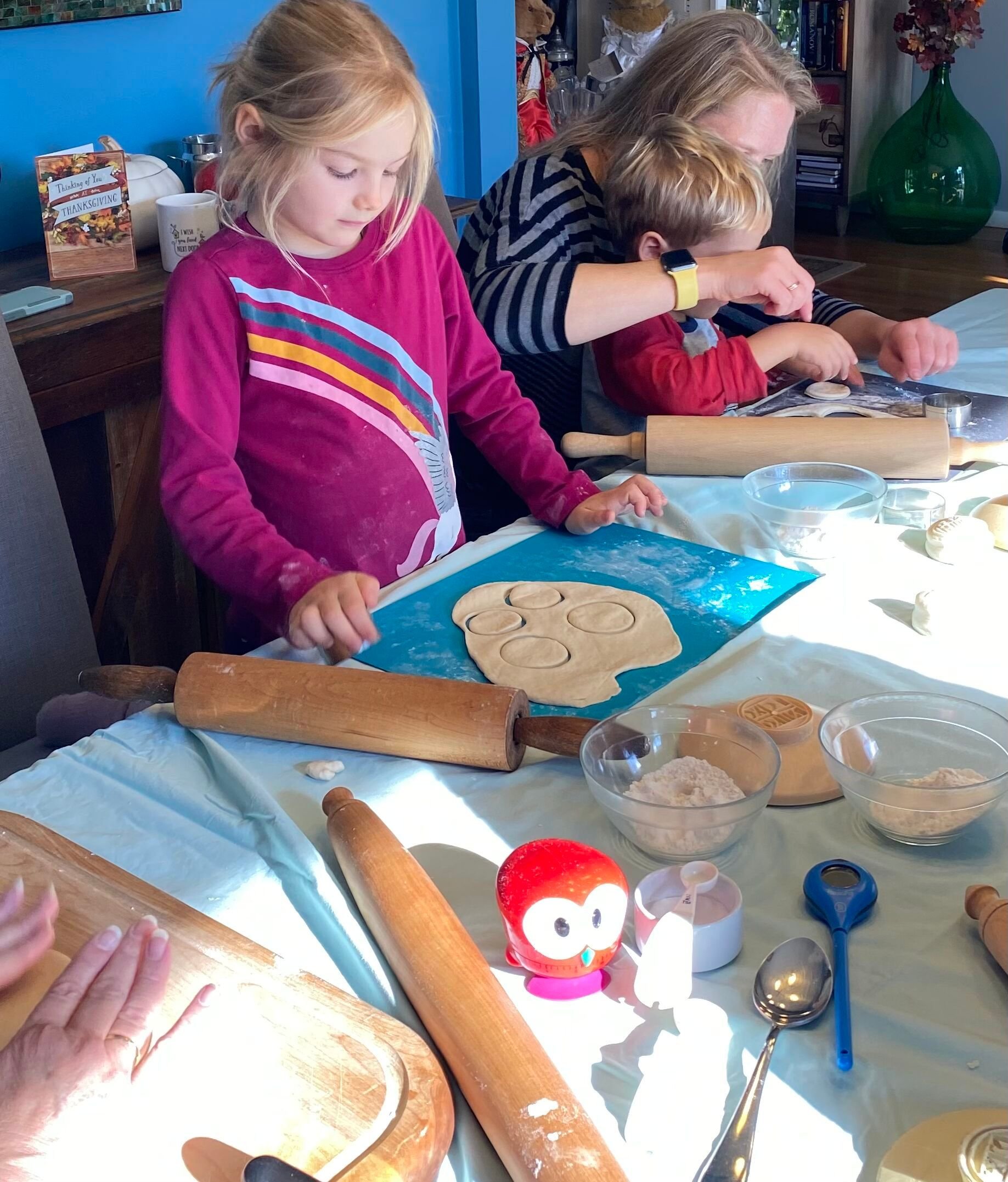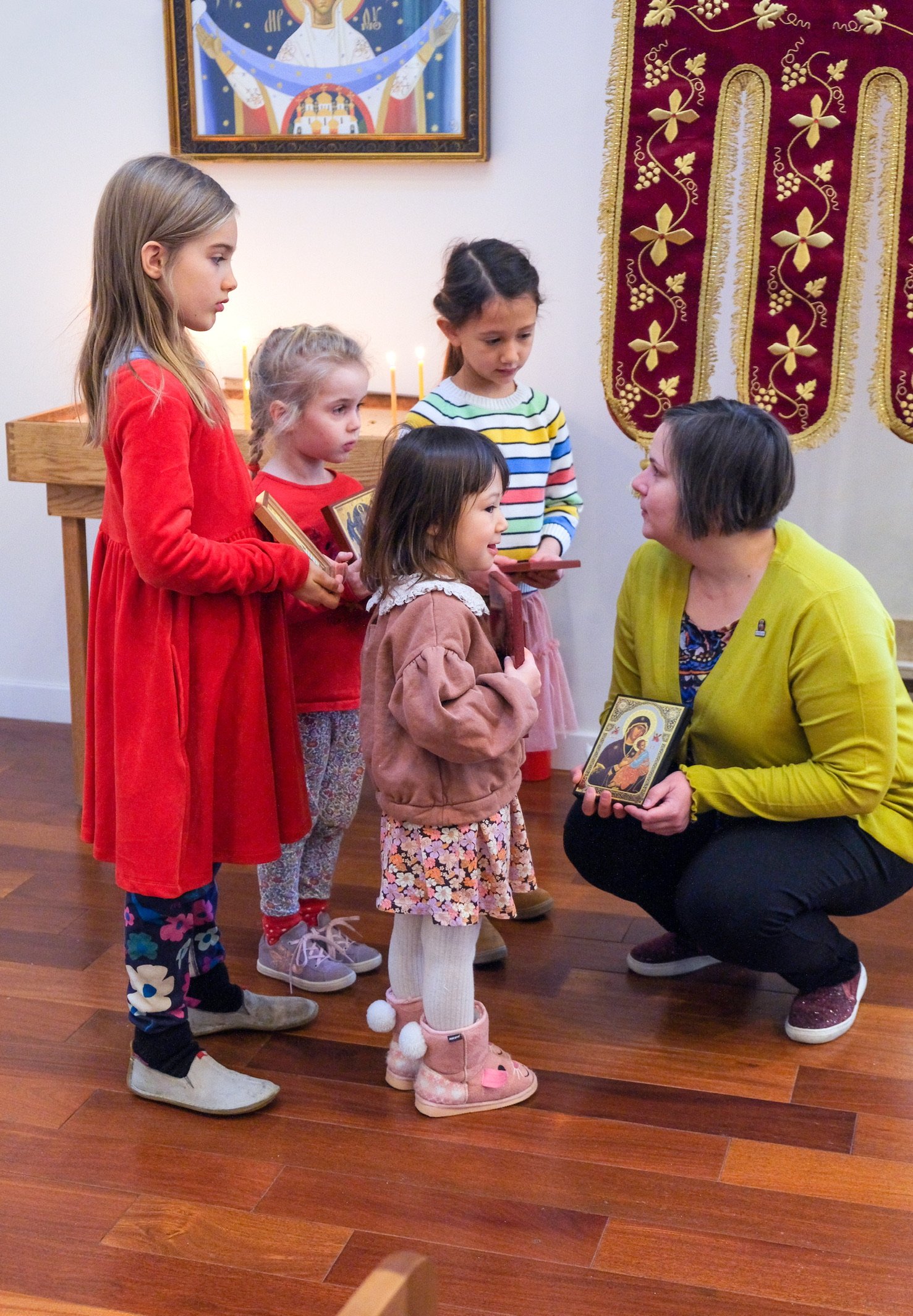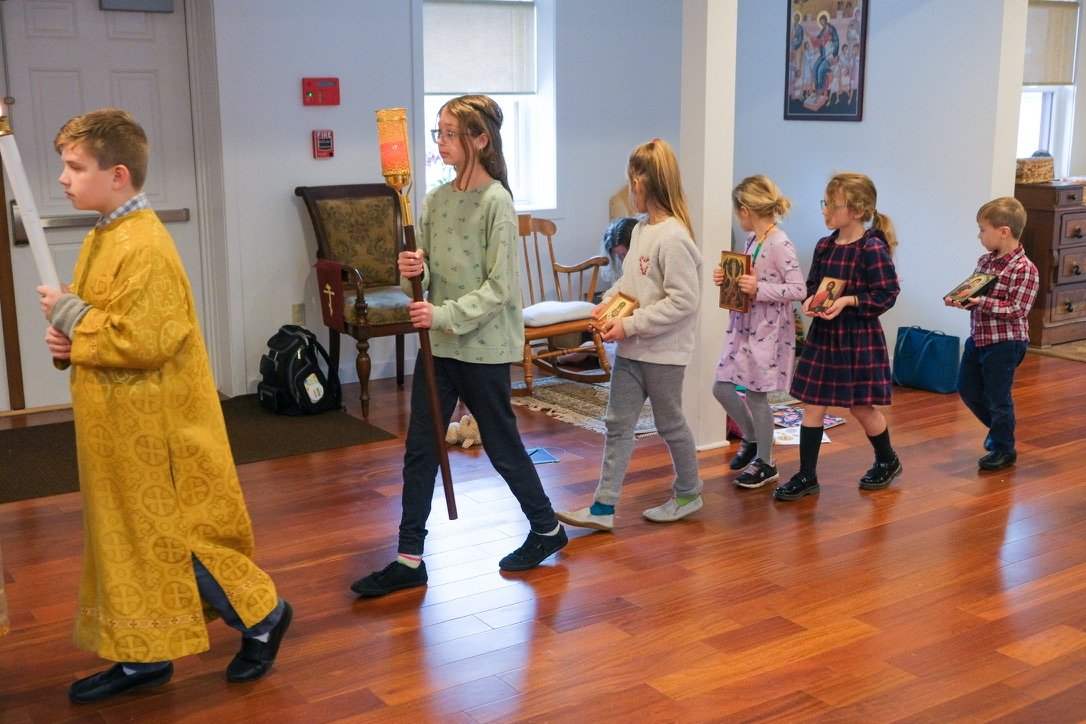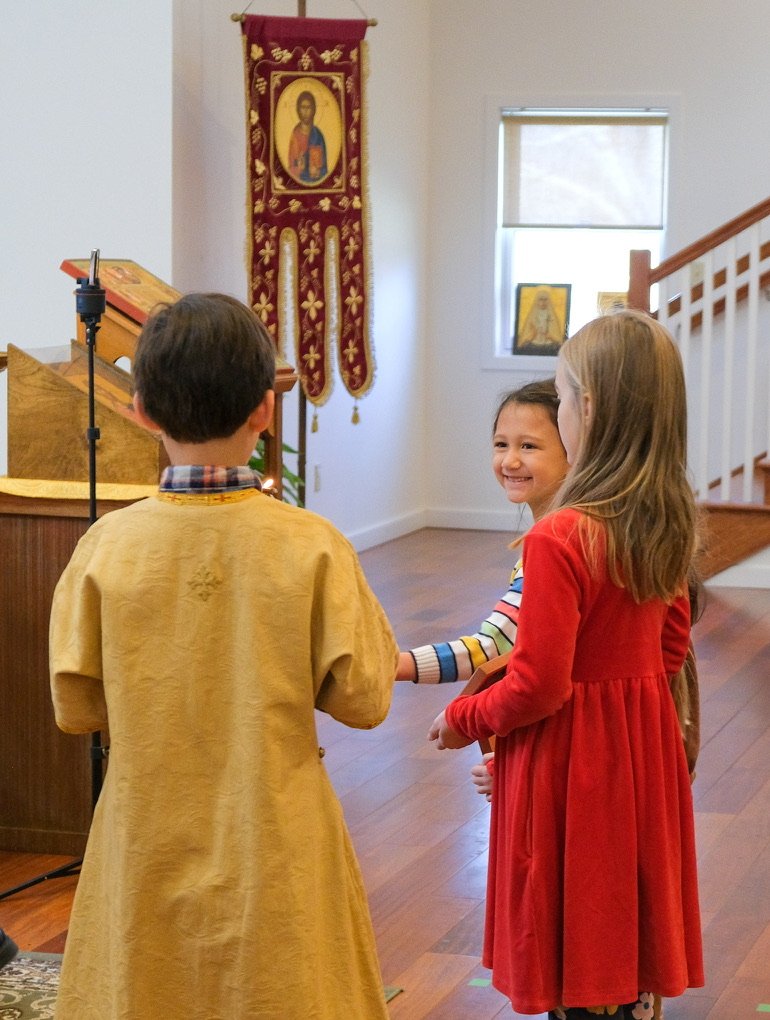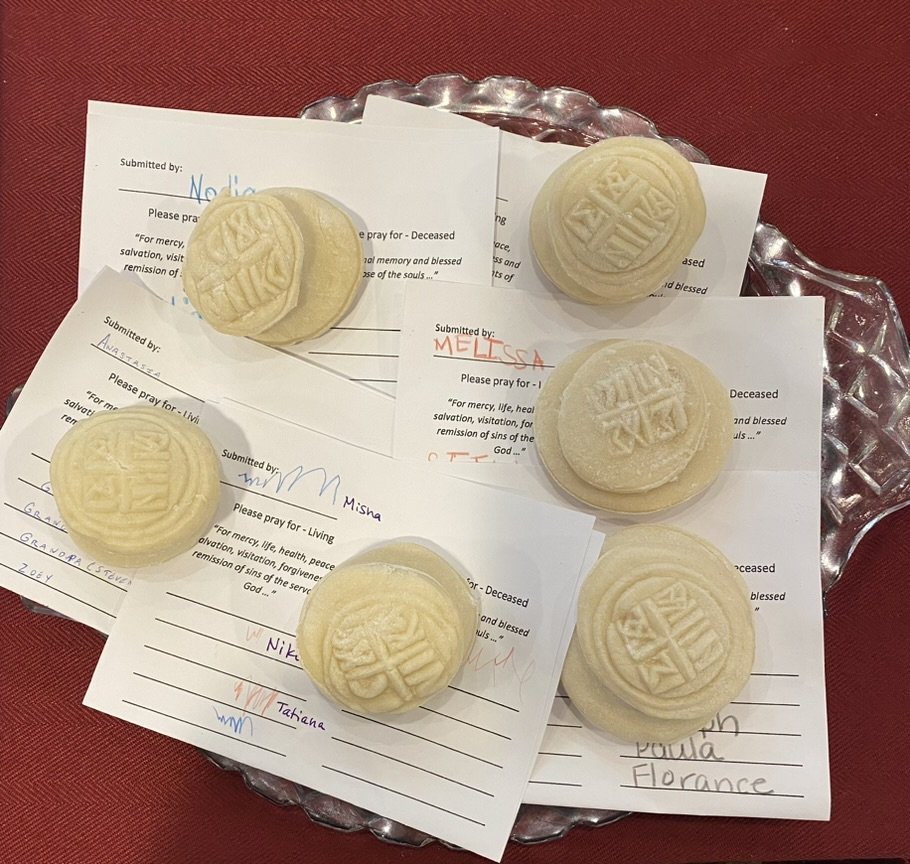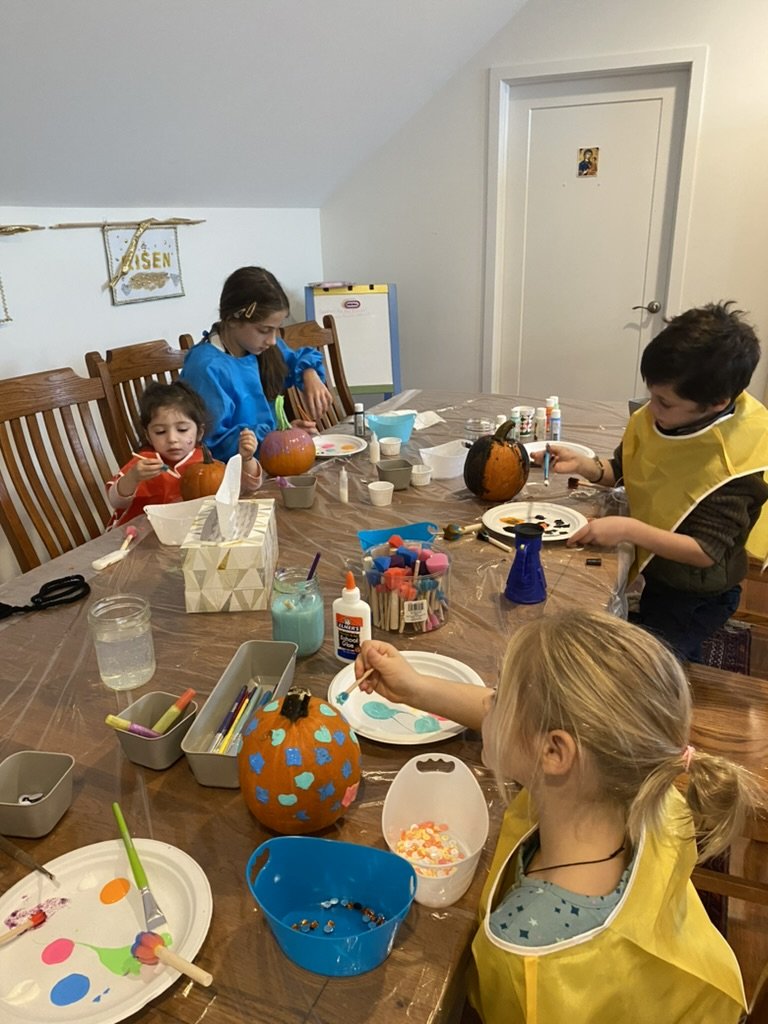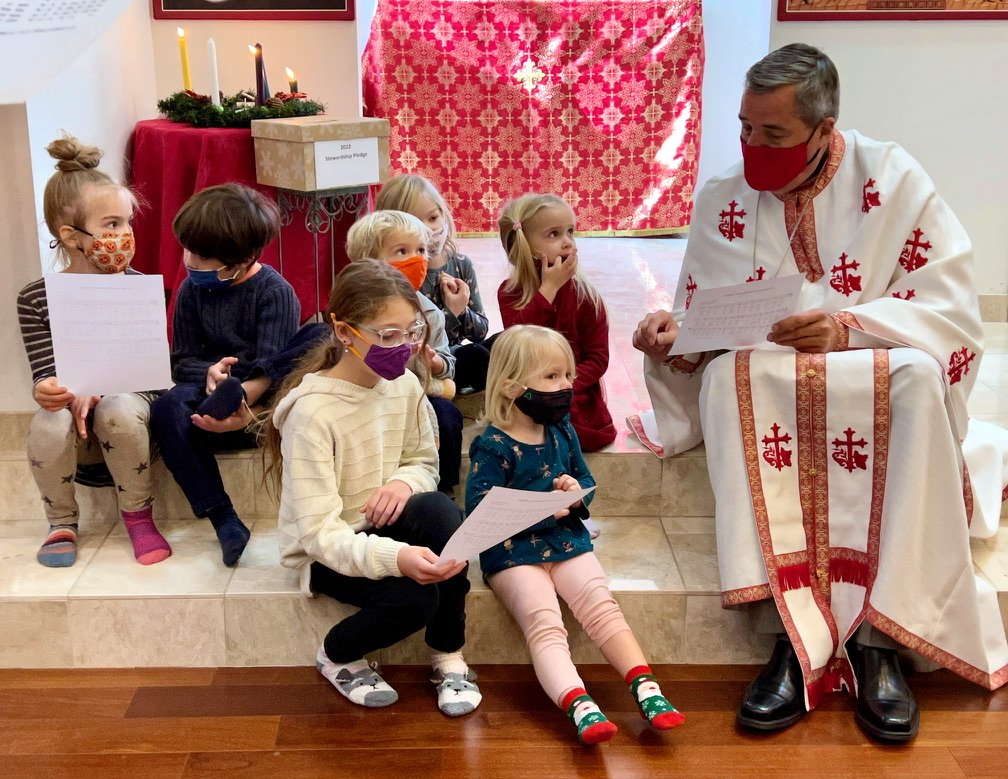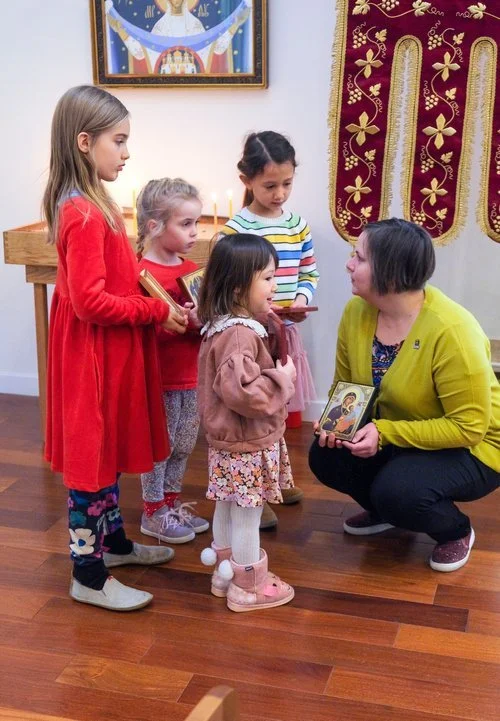Making Faith Come Alive:
Children & the Liturgy
KRISTINA BAKTIS
I have the privilege of leading the Children’s Ministry at Mother of God Joy of All Who Sorrow in Princeton, NJ. My faith grew out of my participation in the services as a child. In turn, I want to provide the children of our parish with opportunities for their own faith to flourish. Orthodox Christian worship is experiential in nature, accomplished through participation in the Divine Liturgy. Since the Orthodox Church affirms that a baptized person, even an infant, is a full member of the Body of Christ, children’s participation is essential to the formation of their faith. As Fr. Alexander Schmemann reminds us:
“Only when a particular teaching of the Church– or as we say, a dogma, an affirmation of some particular truth– becomes my faith and my experience, and therefore the main content of my life, does this faith come alive. If one reflects on faith and thinks about how it passes from one person to another, it becomes obvious that what really convinces, inspires and converts is personal experience. This is especially important in Christianity, because, in its essence, Christian faith is a personal encounter with Christ…”*
At Mother of God, we are creating opportunities to make “faith come alive” for the children of our parish. The children at Mother of God hold candles during the Little Entrance and Gospel reading, carry icons and candles during the Great Entrance, take the collection, and distribute antidoron. Having these “jobs” makes church meaningful while educating them about their faith. I remember last year during the Divine Liturgy, a boy waiting for the Great Entrance examined the icon of Christ crucified that he was holding and asked me, “Why did they use nails? That would hurt. They could have used super glue.” This observation opened a discussion about Good Friday and why anyone would want to hurt Jesus. We also discussed that since Jesus knows what it feels like to be physically and emotionally hurt, He understands our pain and wants to help us.
Throughout the year we combine participation with explanation to orient children and adults to the liturgical cycle of the Church.
On Palm Sunday we connected the hymnology of the church with experience. Before the feast, the children had a lesson to discuss the feast day, the icon, and the troparia. We focused on the role that children played in Christ’s entrance into Jerusalem. Then they made banners that read, “Hosanna in the Highest!” The children took pride in their banners and their role in the service, occasionally waving to their parents and grandparents. The congregation experienced the hymn come alive as children with their banners and “palms of victory” led the way in the festive procession.
For Pascha, the children made banners that read, “Christ is Risen!” They also learned that sometimes it’s ok to be loud in church as long as you’re shouting “Christ is Risen! Indeed He is Risen!”
During Advent, children learned about the different themes of the fast and preparation for the Nativity. Every week the children would write their own prayer inspired by the weekly theme. Fr. Peter would read their prayers to the congregation while a child lit the candle on the Advent wreath. Their prayers were similar to petitions recited during the litanies. They included prayers for loved ones, plants, animals, and the planet, and to protect people from the dementors. The parish learned the themes of Advent and deepened their own faith and understanding.
In November we connected Thanksgiving to the life of the Church in a lesson called “Eucharist means Thanksgiving.” The children (and parents) learned how to make prosphora. The children discussed what they were thankful for. They wrote down the names of loved ones to pray for, living and departed and put them with their prosphora. On Sunday, the entire parish witnessed the vesting of the priest and deacon, and the service of proskomide. Many adults in our parish had never seen this service. The entire congregation was edified because we involve the children in worship.
Participation in the divine services allows us to become a witness to Christ in the world. Fellowship after the service also has a central role at Mother of God, and we have many ways to include children in our vibrant parish life. Our Matronal feast day is celebrated with a fall picnic and pumpkin decorating. In December, St. Nicholas fills the children’s shoes with treats and they decorate the church Christmas tree. At our Pascha BBQ children participate in Easter egg hunts and games. In large measure due to our active Children’s Ministry, parishioners feel comfortable inviting non-Orthodox friends and family to attend our services and participate in fellowship. Many families hold birthday parties and baby showers at the church, creating a feeling of continuity and wholeness between the spaces of family and faith. These events build community within our parish and are a witness of our faith to the larger community.
I return to Fr. Alexander’s words. “Only when a particular teaching of the Church– or as we say, a dogma, an affirmation of some particular truth– becomes my faith and my experience, and therefore the main content of my life, does this faith come alive.” After making prosphora, a girl declared, “When I grow up, I’m going to have all the church school kids over to my house and teach them how to make bread.” Making prosphora became her experience and her faith came alive. A living faith that she wants to share with others. May you be inspired to find ways to make “faith come alive” in your community.
*The Celebration of Faith: I Believe… Sermons, Volume I. Alexander Schmemann. Translated from the Russian by John A. Jillions. St. Vladimir’s Seminary Press, 1991.
Kristina Baktis is a licensed art therapist. She is a member of OCAMPR and a board member of the St. Phoebe Center for the Deaconess. She is a parishioner at Mother of God Joy of All Who Sorrow in Princeton, New Jersey.
